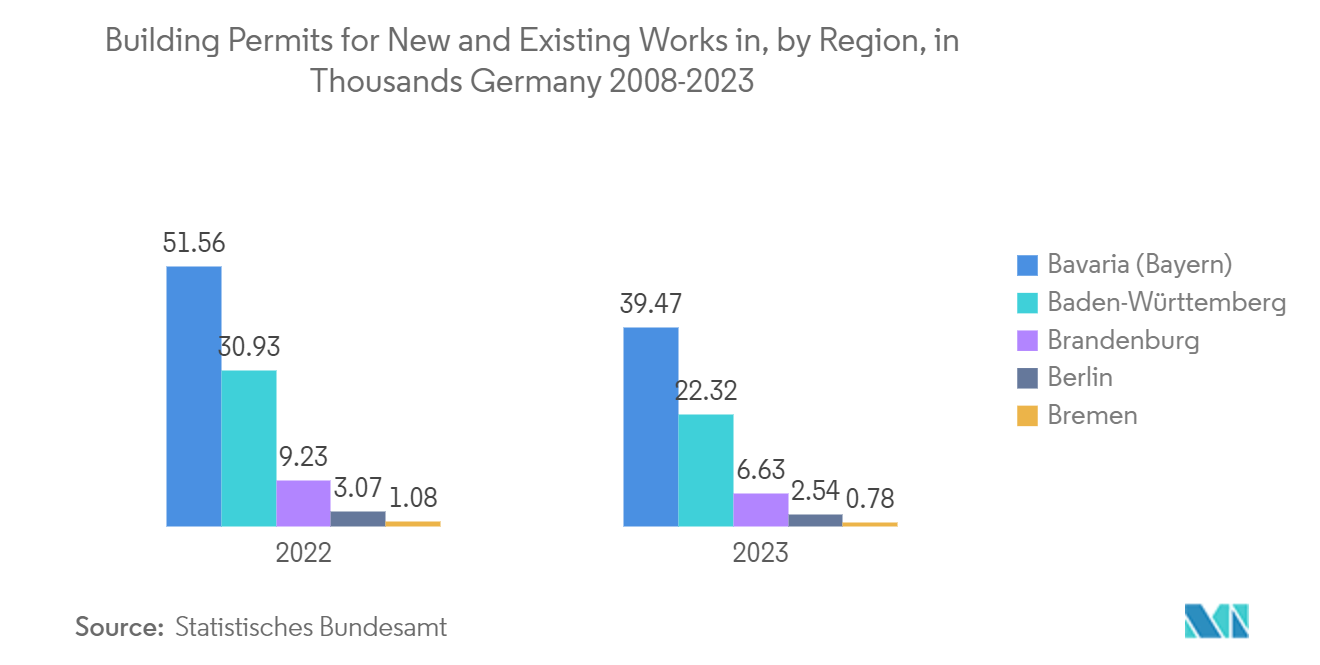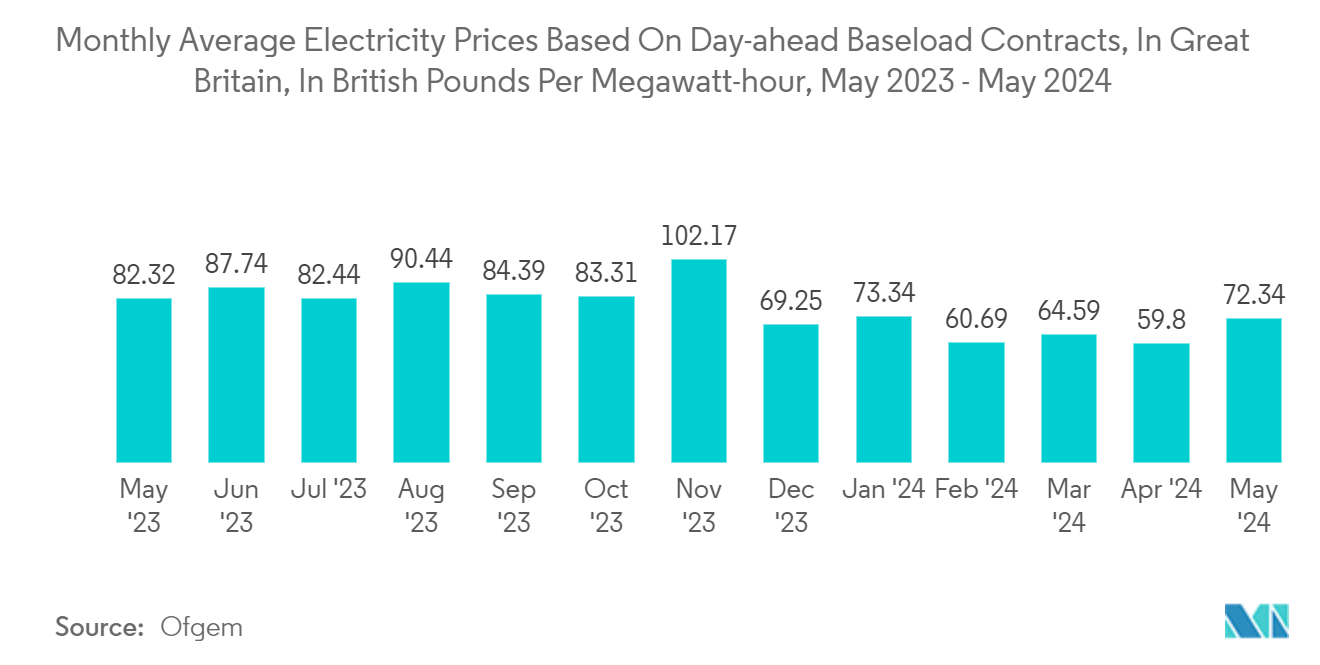Market Trends of Europe District Heating Industry
Residential End User Segment is Expected to Hold Significant Market Share
- The residential consumption from the district heat systems accounts for a major share in Europe. This leads to many carbon emissions, hampering the countries' zero-emission goals of 2050. Hence, governments are actively forming regulations to manage district heat among residents efficiently. Several companies are innovating efficient solutions to cope with the pressing energy problems and increasing carbon emissions in Europe. For instance, in February 2022, a hydrogen heating trial began in Wales to test the 'world’s first hydrogen hybrid heating system.
- Further, the UK Government is presently offering contributions to the initial capital outlay on heat pumps, with GBP 5,000 (~USD 6,110) of the cost and installation of an air source heat pump and GBP 6,000 (~USD 7,332) for ground source heat pumps. However, the initial installation costs of an electric heat pump are still an off-putting hurdle to many potential users in the country.
- According to the European Commission, Buildings account for 40 percent of Europe's energy consumption. Various functions like cooling, heating, and domestic hot water form 80 percent of the energy consumed by the citizens. This indicates the total energy requirement for district heating systems for households and buildings, demanding better energy management. Hence, the European region is open to companies developing greener solutions for space heating and other district heating-related services.
- The European Commission also indicates that more than 30 million building units consume excessive energy. This excess consumption accounts for nearly 2.5 times more than average buildings, which drives up households' energy bills. It highlights the high energy requirements for families in Europe, but it also makes room for energy-efficient district heating solutions. Companies are introducing individual heating solutions using renewable energy resources.
- As the electricity prices hike, households rely on natural gas to fuel their heating systems daily. Natural gas is another fossil fuel that can be preserved and put to better use. Introducing heating systems fueled by renewable energy resources like solar energy, geothermal energy, and others will help manage the energy expenses effectively and contribute actively to reducing the CO2 emission footprint for 2050 environmental goals in Europe.

Germany is anticipated to Drive the Market Growth in Europe
- According to the Federal Statistical Office (Germany), in 2022, the population in Germany, as of December 31 of that year, amounted to 84.36 million people, an increase from 83.24 million in 2021. The average annual temperature in Germany, reported by climate-data.org, is about 8.7 degrees Celsius. These demographics show Germany's primarily cold and densely populated demography, making it a perfect region for district heating facilities.
- The overall prices for energy consumption are higher in Germany compared to other regions. For instance, according to globalpetrolprices.com, the electricity prices in Germany in September 2022 accounted for USD 0.620 USD per kWh for households and 0.918 USD for businesses, compared to the world average electricity prices of USD 0.335/kWh for households and USD 0.261/kWh for businesses. This clearly states how the demand for alternative hot water and heating solutions for buildings becomes necessary to tackle the high electricity prices. Hence, Germany is a promising district heating solutions and heat pumps market.
- Several Government regulations promote the adoption of renewable energy resources in the district heating sector, encouraging the companies to use advanced technologies. The German government takes serious and long-term steps under the Climate Action Plan 2050. For instance, according to BMUV (Federal Ministry for the Environment, Nature Conservation, Nuclear Safety, and Consumer Protection), the Climate Action Plan aims to reduce CO2 emissions by 66-67 percent by 2030 compared to the emissions in 1990, to achieve virtually climate-neutral heat by 2050 across Germany. Such dedicated measures pave the way for companies looking forward to introducing greener district heating solutions in the country.
- In German private households, district heating is used for the most part for space heating. Heating consumption in the industry tends to be more dependent on economic developments; manufacturing businesses tend to use district heating and cooling instead of industrial processes. In the commerce/trade/services sector, in addition to using space heating, use for heating water and other heating and cooling processes also plays a role.
- In Germany, district heating and cooling are considered a particularly important instrument in reducing primary energy consumption and improving Germany's security of supply. According to the district heating association AGFW, until 2030, the combined use of district heating and combined heat and power production could reduce primary energy consumption by 4 percent and national energy imports by 15 percent.


